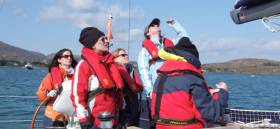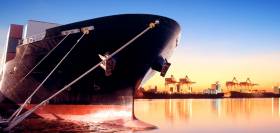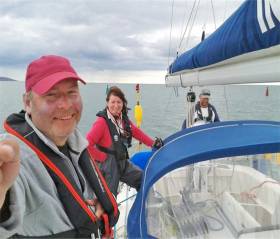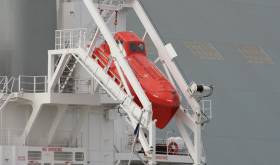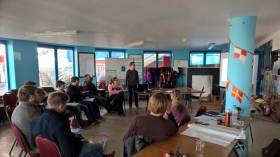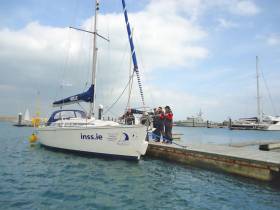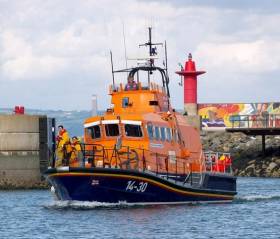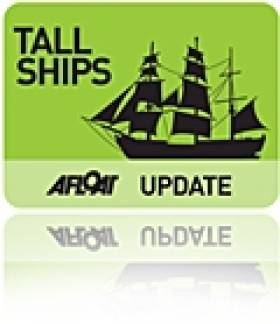Displaying items by tag: training
Learn To Be A Competent Crew Or Day Skipper In West Cork This October Bank Holiday
#HowToSail - Looking to escape to the sea and learn the ropes of how to crew or be a day skipper offshore?
This October Bank Holiday weekend, the West Cork Sailing and Powerboating Centre will host five days of clinics from Saturday 27 to Wednesday 31 October, organised by Wild Atlantic Wildlife in tandem with Bantry Bay Sailing Club and sailed on the 37ft Jessy of Adrigole.
The competent crew introductory course is for those looking to experience being at the elm, helping with the sails, dealing with ropes, learning about being safe on the water and generally being a useful hand on deck.
For more advanced sailors with at least five days on a yacht (100 nautical miles and four-plus night hours), the Irish Sailing Day Skipper practical certification course will be more useful — designed to teach you to take charge safely and confidently.
Spaces are limited for these courses, priced at €500 saying or €800 solo in your own private cabin. The cost includes foul weather gear and lifejacket (you’ll have to bring our own footwear, sleeping bag and pillow), mooring and marina fees, fuel, breakfast and lunch, and one evening meal aboard.
For more details see the Wild Atlantic Wildlife website HERE.
Ciara Peelo To Coach At Laser Training Weekend This Month
#Laser - Irish Laser Radial Olympian Ciara Peelo will be head coach for the Irish Laser Class Association’s upcoming training weekend on 24-25 March.
The Beijing 2008 flag-bearer will offer her guidance especially to lighter and female Laser sailors over the weekend, which is hopeful for a big turnout spurred on by the ‘Annalise Effect’.
Find out more about how to take part on the Irish Laser class website HERE.
State Broke EU Rules Over Seafarer Qualifications Says High Court
#Training - A marine notice issued earlier this year on accreditation for seafarers qualifications has “no legal basis” and must be quashed, says the High Court.
According to The Irish Times, the court has also directed Transport Minister Shane Ross to recognise British-accredited seafarer training provided in Ireland.
The judgement detailed that the Marine Survey Office was in breach of several EU regulations in failing to approve sea survival refresher courses provided by the likes of Cork Harbour’s National Maritime College of Ireland, which are accredited by Britain’s Maritime and Coastguard Agency.
In addition, the European Commission has given Ireland two months to comply with EU law regarding the mutual recognition of qualifications for seafarers.
The Irish Times has more on the story HERE.
Learn From An Expert On INSS South East Summer Cruises
#Cruising - Leisurely cruising isn’t all that’s on the agenda when the Irish National Sailing & Powerboat School’s Elan 36, Beaufort Venture, sails the South East Coast this July.
INSS cruising instructor Gary Curran will lead each cruise in a series of mile-building passages, giving expert guidance to help you practice the skills you need for your own yachting and cruising programmes.
Places are still available on two of the five cruises (€560 each, travel and meals not included) which promise to include everything you will find in the INSS’s standard Competent Crew or Day Skipper courses.
Cork to Castletownbere to Schull from 6-10 July and the return journey from 12-16 July are both five-day cruises. Book quickly to avoid disappointment via the INSS website HERE.
Sea Survival Training Course Dispute Moves To High Court
#CourseDispute - A top maritime college’s dispute with Irish marine authorities over the approval of sea survival refresher training has reached the High Court, as the Irish Examiner reports.
The National Maritime College of Ireland, under the Cork Institute of Technology, argues that the refusal by Transport Minister Shane Ross to approve its refresher courses could see it facing claims for almost €1 million in course fees.
As previously reported on Afloat.ie, all commercial mariners were required to have completed a programme of mandatory refresher training in basic sea survival by the start of this year.
But the NMCI claimed a submission it made in early 2015 for its relevant courses — provided in a joint venture with SEFtec Global Training Ireland Limited at a cost of €800 per individual — was not approved by the department, putting jobs at risk.
Now that joint venture, SNO, is making a legal challenge against the Department of Transport’s refusal to recognise its certificates — noting that a recent Marine Notice regarding ‘approved’ training is “wholly irrational” and allegedly breaches EU regulations.
The Irish Examiner has much more on the story HERE.
#ISA - The Irish Sailing Association’s latest Senior Instructor assimilation course takes place later this month on Saturday 27 and Sunday 28 May at Malahide Yacht Club.
The ISA Senior Instructor Assimilation Programme was introduced in 2015 in response to the shortage of qualified Senior Instructors particularly during the peak club junior training programme period.
The aim was to allow those who had previously held a Grade A or SI qualification and with experience in that role, but whose qualifications had lapsed and not been active in that role for some time, to revalidate the qualification.
Eligibility criteria for the €150 course includes one or more of the following:
- Former ISA/IYA Grade A instructor.
- ISA Senior instructor lapsed for more than 3 years.
- Senior Instructor qualification from foreign sailing NGB (RYA, FFV, etc) where valid ISA instructorship is held.
- Aged over 25 with valid ISA instructor qualification and minimum of 3 years experience in organisation and supervision of sail training activity, to be supported by log and two industry references.
The full criteria are available from the ISA website, where you can also find the course booking form and make payment for the course fee.
Day Course On Mooring & Handling Yachts Under Power
#HowToSail - A new series of short yachting courses at the Irish National Sailing & Powerboat School (INSS) begins with a one-day course on various techniques for mooring and handling a yacht under power.
This day-long course (9.30am-5pm) will run three times over the summer, with the first on Sunday 7 May, and covers the following topics:
- Basic engine checks
- Throttle and gear controls
- Rudder, propellers, propwalk and pivot points
- Going ahead and astern
- Use of wind and stream to aid manoeuvres
- Manoeuvring in confined spaces
- Moving to and from a marina berth under power
- Use of springs and other berthing techniques
The €99 course is recommended for any sailors heading abroad over the summer months who want to brush up on moving about tighter spaces, or those thinking about doing an ICC assessment.
Larne Lifeboat Crew Trains With Dublin Coastguard Helicopter
#RNLI - The RNLI volunteer lifeboat crew from Larne carried out a training exercise with the Dublin-based Irish Coast Guard helicopter Rescue 116 off Ballygally Head yesterday (Sunday 10 April).
The Sikorsky S-92 initially visited Larne on 20 March last when they landed on Curran Point. The visit consisted of a briefing to Larne RNLI crew and included an orientation of the helicopter. The Larne Coastguard team was also present on the day, securing a safe landing zone for the helicopter.
Larne RNLI launched both their relief all-weather lifeboat Windsor Runner and inshore lifeboat Terry yesterday for the exercise to simulate recovery of a casualty to a helicopter in an emergency situation.
The lifeboats practiced manoeuvres at speed with Rescue 116. A crew member was winched into the helicopter and a casualty stretcher was transferred from the helicopter to the lifeboat. The helicopter winchman also landed onto the inshore lifeboat.
The RNLI regularly carries out exercises with other rescue agencies. It is this training that ensures the crew are able to work effectively with other agencies in an emergency situation, including medical evacuation of a casualty to a helicopter.
Larne RNLI coxswain Frank Healy said: "This was a very valuable exercise with the Irish Coast Guard. It's fantastic to step up the volume and breadth of our training coming into what is traditionally a busy summer period for call outs. Our thanks to the Irish Coast Guard for making this exercise possible."
Maritime College Launches Global Safety Training Network For Marine Workers
#CorkHarbour - Cork Harbour is set to host the world's biggest training network for seamen and offshore workers, as the Irish Examiner reports.
The National Maritime College of Ireland (NMCI) was expected to make the announcement today at the CrewConnect Global conference in Manila, capital of the Philippines – a significant contributor of labour to the marine industry worldwide.
Provided by GAC Training and Service Solutions (GTSS) — the joint venture between the NMCI and global shipping, logistics and marine services provider GAC – the training will ensure seamen and workers on offshore oil and gas platforms undertake mandatory survival and refresher courses under new international sea safety rules that come into force in 2017.
Under a new partnership with offshore transportation specialists ATPI Griffinstone, some 45,000 marine workers will be trained as centres across the globe.
The Irish Examiner has more on the story HERE.
#tallship – The visit of the Tall Ships to Belfast from July 2nd to 5th was anticipated with an enthusiasm which was fully justified by the numbers which became involved. Sixty vessels of all sizes assembled on both sides of the River Lagan in the rejuvenated docklands area and the Titanic Quarter, with a goodly sprinkling of the Class A full-rigged ships dominating the scene. And in a well-organised shoreside transport scheme involving Park & Ride centres in the suburbs, the people were able to get to the clean new quaysides in their thousands, in their tens of thousands, in their hundreds of thousands – indeed, it's reckoned that when those who clustered along the shores of Belfast Lough to watch yesterday's departing Parade of Sail are added in, well over half a million people were involved.
At the many events in Belfast Docks, organisers Sail Training International reported that the number of people making a point of personally going aboard one of the Tall Ships was unprecedented at any port since the international programme was launched way back in 1956, underlining the great interest there is in these ships, and what they do. In future discussions on Afloat.ie, we'll be looking at how the success of this event will affect the re-development of a proper sail training programme in Ireland north and south. But for now, with the Sail Training Races 2015 started this afternoon off Portrush on the north coast after the fleet had sailed there from yesterday's departure from Belfast Lough, W M Nixon recalls some memories from the Parade of Sail.
It's something of a triumph of hope over experience expecting to see fleets of Tall Ships becoming veritable Cathedrals of Sail when they're proceeding seaward for their first race after several days of assembling and partying like crazy in some hospitable port. Even with the ten or so miles of open water which Belfast Lough provided before the boats headed into the North Channel yesterday afternoon to proceed to today's start of the Tall Ships first race of the 2015 programme to Alesund in Norway, there's little enough room for the biggest ships to start shaking out the canvas and engaging in anything approaching close quarters manoeuvring.
Then too, in some cases Belfast will have seen crew changes, and the ship's officers – who may themselves just be ever so slightly partied out – will be reluctant to put fresh untested crewmen through all their paces in the first day out, and all of it under observation from boats large and small tearing about the lough on spectator missions.
But even without sail set, the best-looking big ships really are astonishingly handsome. As two of the ports for this year's programme are in Norway, the Norwegians were putting on the style with the presence of three famous full-rigged ships – the Christian Radich, the Sorlandet, and the Statsraad Lehmkuhl. They'll have left Norway in pristine condition, and clearly their crews were determined to keep them that way for the return home, as their square sails remained resolutely neat, tightly furled as a stockbroker's umbrella, with the ships setting only two or three staysails as they proceeded primly down the laugh.
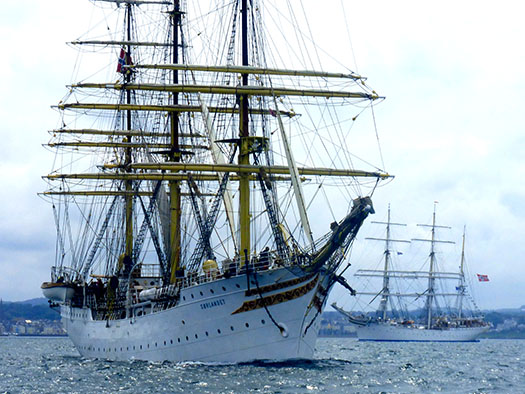 Superbly presented....but setting no square sails – two of the Norwegian biggies, with Sorlandet in the foreground. Photo: W M Nixon
Superbly presented....but setting no square sails – two of the Norwegian biggies, with Sorlandet in the foreground. Photo: W M Nixon
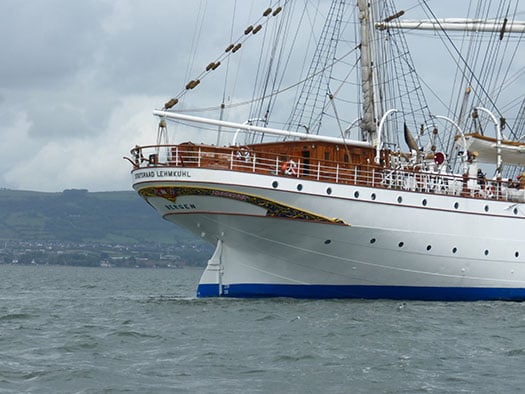
The elegant stern of the Statsraad Lehmkuhl was a joy to behold Photo: W M Nixon
Fortunately we'd the people's choice star of the show to brighten things, the Ecuadorian ship Guayas, game for anything with all sail eventually set, and the usual vast Latin American ensign flying from the mizzen. Guayas is on her first round the world cruise, and she must have been away from home for quite some time already. Let's put that another way. If any international marine paint manufacturer happens to be reading this, may we suggest that you could do yourself a lot of good in worldwide PR by donating many gallons of fresh white paint to the good ship Guayas. Nevertheless if there was an award for party spirit, Guayas would have won it easily.
In terms of square riggers setting the cloth, once again it was the Dutch who set the pace, this time the most enthusiastic being the Morgenster, which is a favourite among Irish trainees. She had her sails up and drawing while still in the Lagan, and looked the part at every stage.
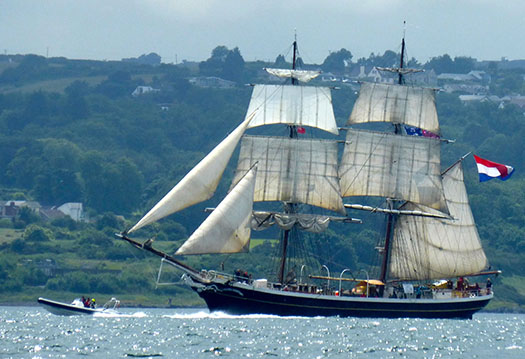
The popular Morgenster had her square sails set before she cleared the river. Photo: W M Nixon
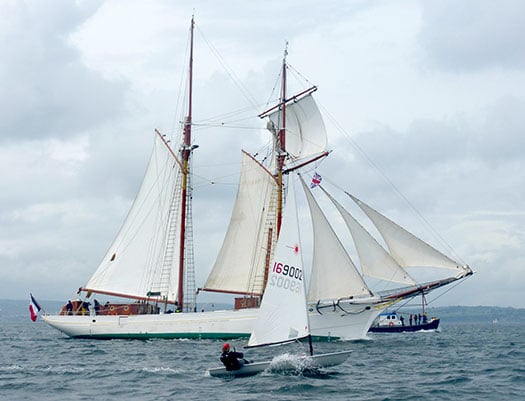 A Ballyholme Laser sailor takes on the French schooner Etoile – and he kept up with her too.....Photo: W M Nixon
A Ballyholme Laser sailor takes on the French schooner Etoile – and he kept up with her too.....Photo: W M Nixon
Also quickening many an old salt's heart was the French tops'l schooner Etoile, which with her sister-ship Belle Poule has been sail training French naval cadets for longer than any of us can remember (it's 1932, as it happens) and she continues to be a tidy and manageable size which might be an inspiration for those who think Ireland doesn't absolutely have to have her own Class A vessel.
In terms of vessel numbers, it was of course the smaller fore-and-aft craft which made up the crowd, and observing from aboard the hospitable Peter & Carolyn Minnis's Mitchell 31 powercruiser Blue Echo, our group was particularly taken with the team spirit shown by the cheerful crew on the London-based Oyster 80 Rona II.
As for the presence of the eternal Jolie Brise, those of us who knew that this remarkable vessel was the winner of the first Fastnet Race ninety years ago still find it a wonder to behold the way such a hefty vessel can slip through the water, while those who were seeing the splendid old cutter for the first time were much taken with the Fastnet links.
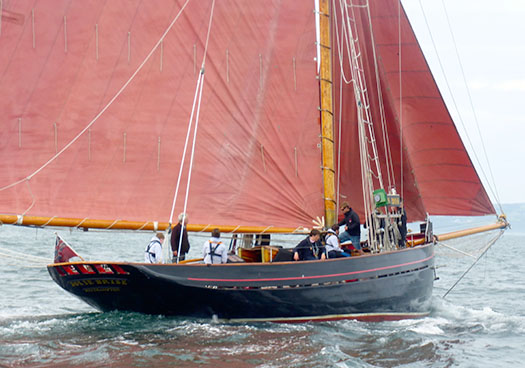
The eternal Jolie Brise – this winner of the first Fastnet Race ninety years ago continues to impress with her stylish way through the water. Photo: W M Nixon
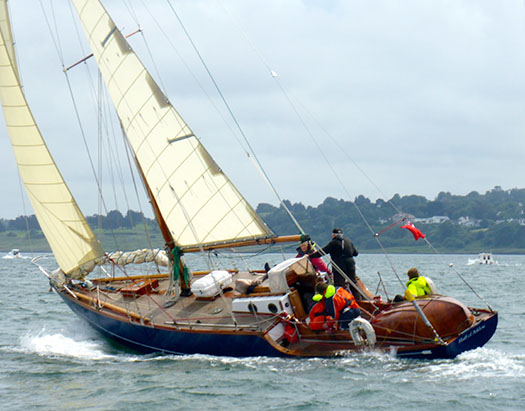 Back to life – the superbly restored Huff of Arklow revelling in the sailing on Belfast Lough. Photo: W M Nixon
Back to life – the superbly restored Huff of Arklow revelling in the sailing on Belfast Lough. Photo: W M Nixon
Equally impressive in her way was the restored Huff of Arklow, the Flying Thirty first built by Jack Tyrrell of Arklow in 1951 to an Uffa Fox design, and now brought back to vigorous new life by Dominic Bridgeman and his group down Plymouth way. She's due back in her first home port of Dun Laoghaire on Wednesday to be an adornment of the Volvo Dun Laoghaire Regatta 2015 and we'll look at her in more detail in the near future, but meanwhile rest assured that she cut a real dash in Belfast Lough on Sunday.
And finally, with the fleet now on their way towards Norway from today's start area off Portrush, it was more than appropriate that the last little boat we diverted towards for have a looksee was the classic Greencastle yawl James Kelly, built by Robin Ruddock and his maritime heritage group in Portrush in honour of the great local boatbuilder who, between 1895 and 1910, built many notable craft including three Dublin Bay 21s and seven Howth 17s. The James Kelly is one jaunty little craft, and she was sailing like a witch.
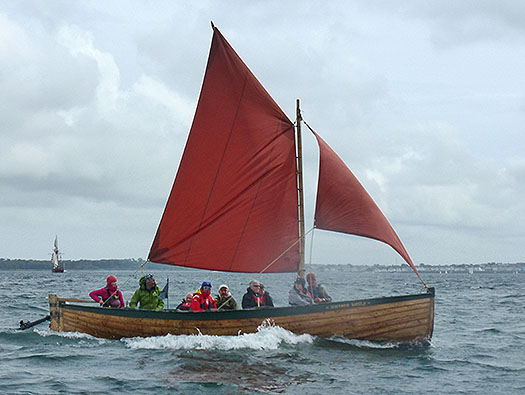
Gallant little boat. The Greencastle yawl James Kelly was brought down from Portrush to salute the Tall Ships on Belfast Lough. Photo: W M Nixon


























